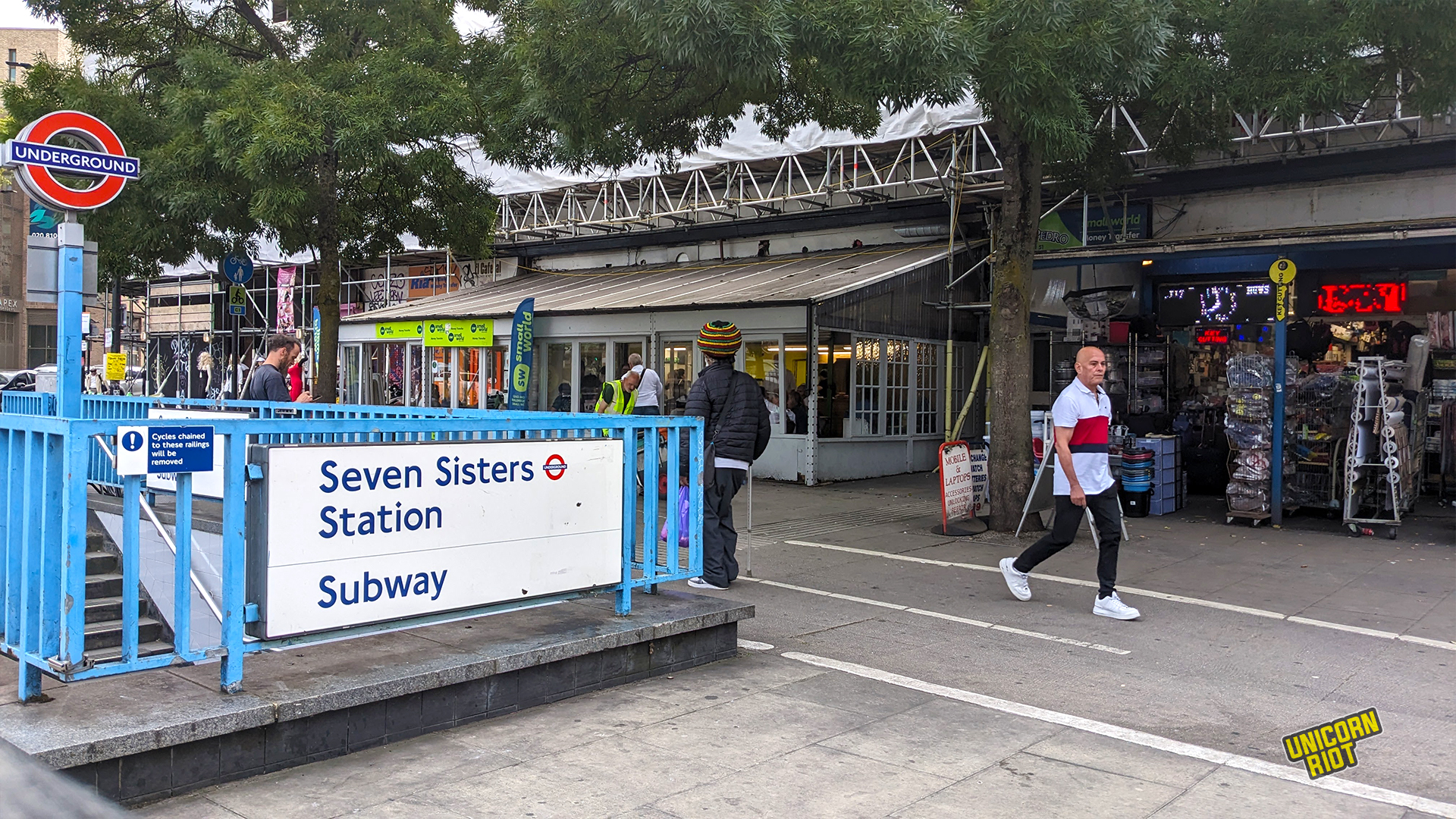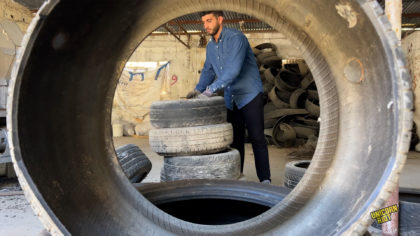Tale of the City: Gentrification in London – Part 3
A village of hope in the city – Latin Village
London’s indoor market Latin Village, in the Seven Sisters district of Tottenham, is a vibrant hotspot for anti-gentrification efforts in Britain. The village is an ongoing sociopolitical experiment that draws the attention of people, groups and organizations that are involved in anti-gentrification struggles all over the world.
We dig into some of the recent history of this region and movement in the borough of Haringey. This is the last in a three-part series on gentrification in London – see part one on Elephant and Castle and part two on Brixton.
This article is an analysis piece reflecting lived experience, research and local perspectives. The views and opinions expressed don’t necessarily represent those of Unicorn Riot.
An urban area, or a borough, can be perceived as an organism and the communities that constitute it can be considered its active living cells. Depending on their passive or dynamic stances, communities can act as catalysts to the quality and direction of urban development in the area. A very good example lies in Tottenham, which aside from its globally known football / soccer team the Tottenham Hotspur, is also known for the Latin Village.
In the borough of Haringey in north London, about half of Tottenham’s 130,000 people are white, and half of those are immigrants from Eastern Europe. A big Latin American community mostly of Colombian ancestry thrives among the very diverse other half. Being a multiracial space for many decades, Tottenham has a solid antiracist and politically competitive background as is reflected by large riots that have taken place there over the last decades. The Broadwater Farm riot in 1985 was the first riot in which firearms were used and most recently the 2011 Tottenham riots, which took place after the police killing of Mark Duggan, had intense anti-gentrification characteristics.
A market became a village, got threatened, then crafted a community plan and won
The Seven Sisters Indoor Market, also called Wards Corner, hosts a vibrant Latin community which granted the market the names Pueblito Paisa, or the more popular, Latin Village.
After making space for Latin American businesses in the 1970s, the market gradually became a village to an ever growing and close-knit Latin community. In 2016, there were around 60 traders with storefronts in Latin Village, which is the only remaining Latin market in London after the demolition of the shopping center in the Elephant and Castle area of Southwark, London.
However, in 2004, the market faced the most threatening redevelopment program to date, one that would gentrify and change the face of the neighborhood.
Grainger plc real estate company, self-titled as “one of the UK’s largest professional landlords,” claimed the indoor market property where Latin Village was housed. They planned to demolish, regenerate, and redevelop the market space. An agreement was signed in 2007 with the Haringey Council to construct 196 luxury apartments and provide an additional space for retailers.
Like in the case of the demolished Elephant and Castle Shopping Center, the market was more than a financial hub, offering space for the community to breathe and deploy its everyday splendor. Furthermore, it offered the potential to publicly interact with other cultures as visitors came from all over London and the world.
Forty traders, many of whom have had their stalls in the village since the 70s, have built a collective community of mutual aid and solidarity. These were the main ingredients that mobilized the community of Latin Village to form the Save Latin Village campaign in 2019 after the state finally approved of Grainger’s acquisition of the site.
The campaign imagined new ways to achieve visibility and create high quality organizing. A new community-led redesign process crafted a plan of the future of the market and called it Wards Corner Community Plan.
Using as its core philosophy that the existing market should remain intact, the plan was the fourth iteration of the community in a 12-year period (2007, 2011 and 2014). Each one respecting and aligning with the multi-generational, multi-cultural and multi-purpose nature of the space.
In order to avoid future financial disputes between groups, the residents, traders and activists who issued the plan then created The West Green Road and Seven Sisters Development Trust. They stated they aimed to “promote social, environmental and economic sustainability in the area by supporting community-led development for the benefit of local people, promoting local enterprise, and championing locally owned assets.”
Architectural collective Unit38, consisting of activists from various anti-gentrification struggles in London, was contracted to provide research and co-design the project.
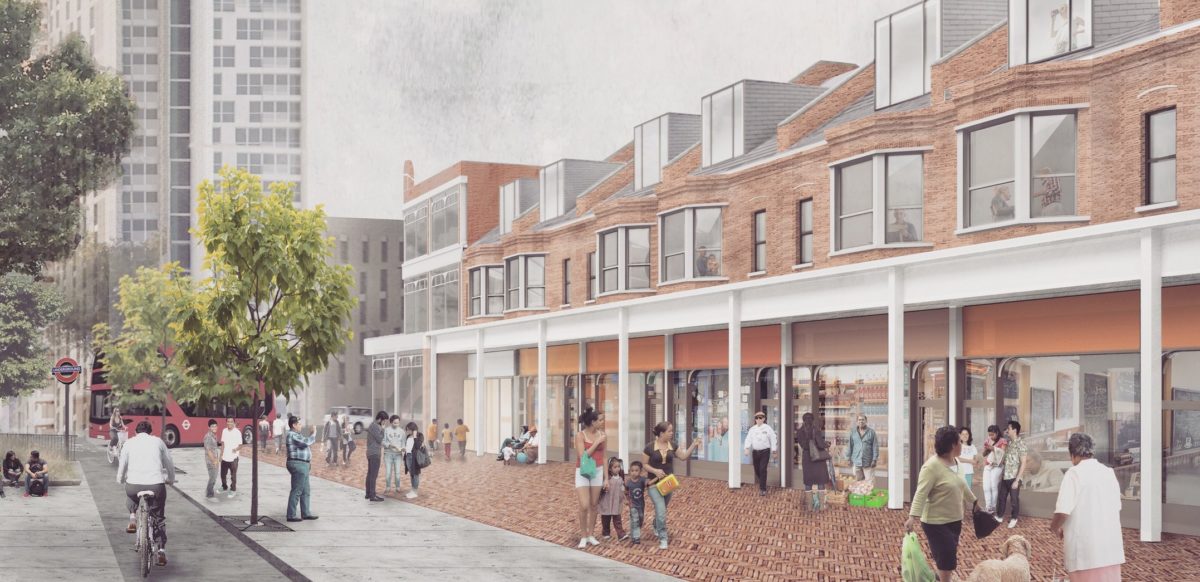
Then suddenly, in 2021, Grainger plc abandoned the multi-million dollar redevelopment plan, citing high-rise building costs and local opposition to the project.
This came as a victory for the community, who had organized an expansive community plan aiming to:
- provide improved trading space for all existing traders and for new small businesses;
- celebrate the unique identity and culture of the market;
- protect the physical heritage of the market, the Wards Corner building and the integrity of the high street;
- create a market that is self-managed by the community;
- establish the area of Seven Sisters as a community ‘gateway’ to Tottenham.
Another aspect of the community plan, the Community Benefit Society (CBS), was founded in 2022 by grassroots groups and people who held campaigns in Tottenham to save the market over the last 20 years. CBS was formed to reinvest the money into the local community.
A nightmare had ended for many in the Latin Village and a dream was pervaded in the air.
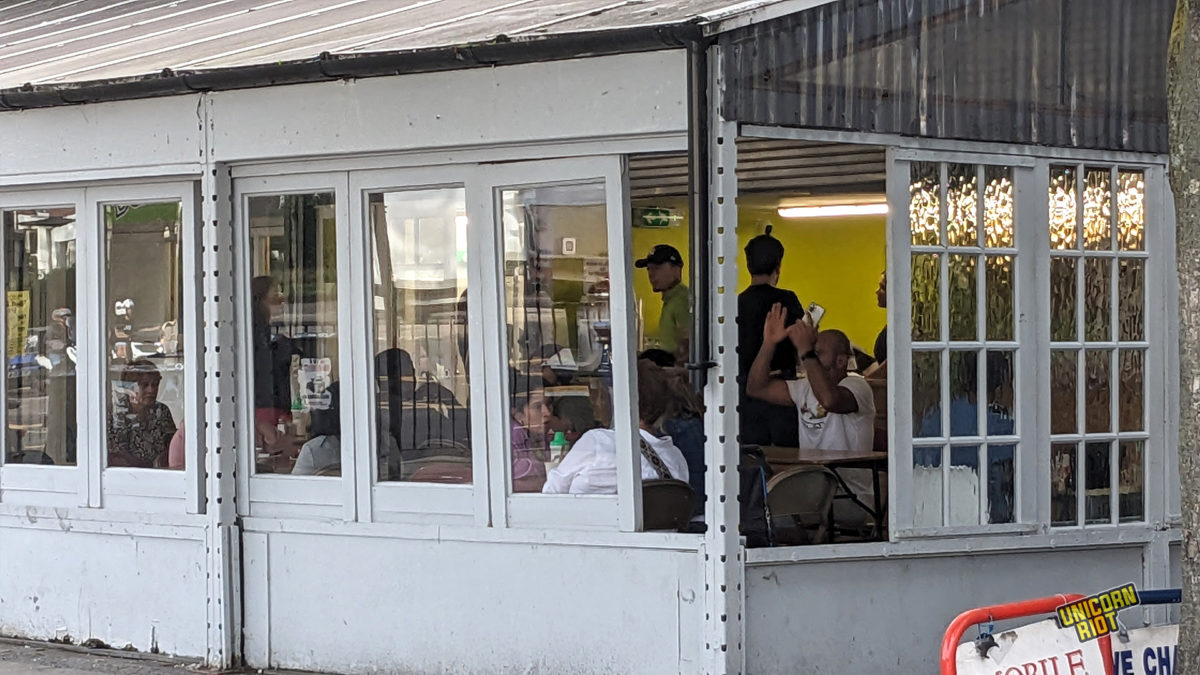
Happy endings are not just in the movies…
Happy endings in struggles against gentrification can be hard to find but when they emerge they can carry a legacy of decisive points applicable to other present and future battles.
The community-based plan that emerged from the Latin Village movement is a proposal that comes from below, giving a creative, positive approach to the struggle. The plan has potential that can be accomplished by turning the passive contribution of the participants into an active decision-making role.
People involved become active shells of the new body that will be formed to move the community toward waters of hope. Individuals act collectively as a society not only to resist a predetermined crime against them, but more importantly to institute their everyday life and environment beyond the arbitrariness and assignment of authority.
The involvement of the Unit38 collective in the Wards Corner, reveals the adaptive need to embody scientific and technological tools and structures to the variant struggles. An element broadening the spread of the campaign. New technologies applied in a radical city planning approach could redefine jobs as a meaningful challenging creation.
The sudden 2021 victory in Latin Village was similar to the July 2023 victory of the #FightTheTower campaign in Brixton, London where the proposal for a large development project that would change the face of the Brixton Market was withdrawn. Both situations had swaths of everyday street organizing, community solidarity, and newer elements of internet campaigns.
All of the study cases in our three-part series “The Tale of the City: Gentrification in London” reveal the effectiveness of active organizing within the community facing gentrifying development.
The Latin Village campaign wouldn’t be victorious if it had cracked during the hard-boiled fifteen years it lasted.
Brixton would have already bent to the disposal of a multi-millionaire DJ if the disappointment of previous losses prevailed over the necessity of the fight the tower campaign.
Elephant and Castle’s activists and groups would have thrown the valuable experience of a struggle against a disproportionate gentrification attack in the area to the garbage. What kept them going was the community’s tenacity and endurance to remain active.
A continuance of gentrification and the struggle to oppose it
A conclusion that could be deducted is that when gentrification appears in a place, it becomes a never-ending process. It strikes in different waves and tensions and is always in confluence with various political or financial interests.
The communities that undergo gentrification are forced to long-term perpetual struggles that are condemned to erupt in exhausting paces. However stressful and anxious a community gets during a struggle against gentrification, it should never let its guard down, because more development that could lead to gentrification is always around the corner.
Raising awareness about the phenomenon of gentrification in potentially targeted areas could prevent them from being gentrified. When the danger of gentrification pervades the area through residential or market developments, that awareness can help the community act on time.
Equally important is the awareness of social, political and cultural factors in an area that can unwittingly lead to gentrification. Authenticity and grit often accelerate the potential gentrifying action in an area and activists, subcultures and artists should have this in mind, since in many cases they have been the trojan horse for gentrification to ride.
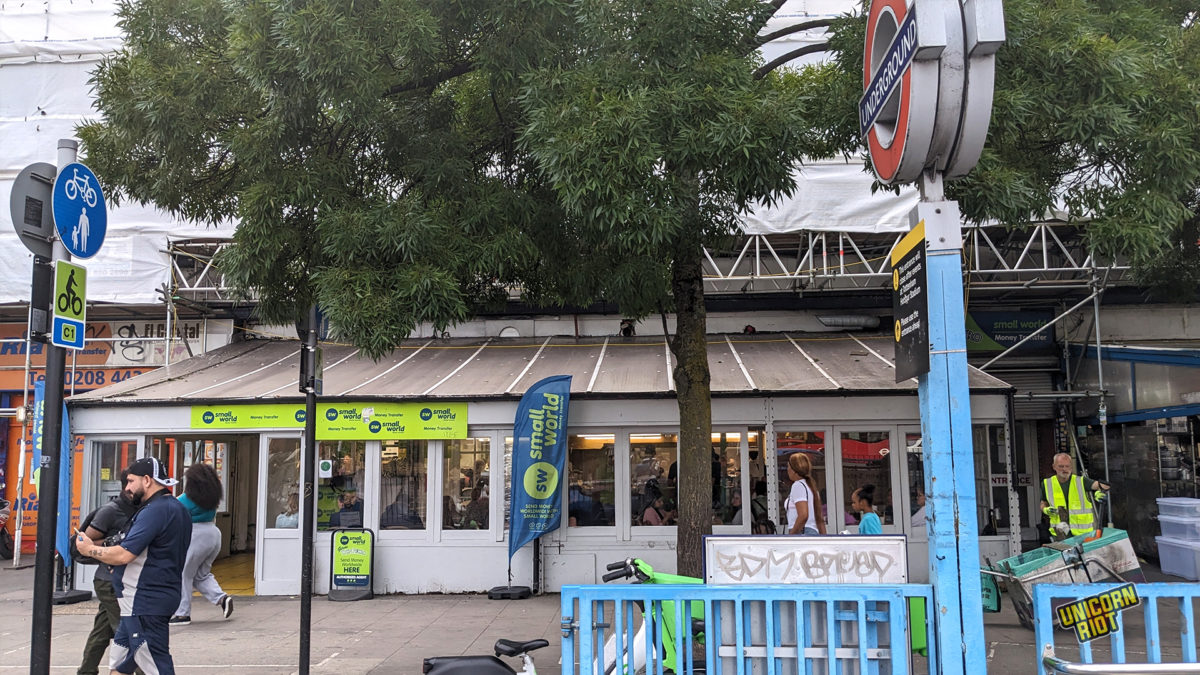
A pause, a moment of silence to breathe, can come through community-based plans and efforts. Besides an answer to gentrification, these plans could most importantly synthesize a blueprint for a new kind of urban regeneration. And the more inclusive a community is, the more chances it has to achieve a proposal.
As future movements are built, the next steps for the traditional anti-gentrification groups consisting mostly of activists and the people who are directly targeted, are to widen their call for participation. Communicate with the local markets, subcultures and various communities in the area who don’t fit the refurbishing criteria. Artists and media makers also help strengthen the visibility of campaigns.
Organizers are continuing to see the importance of reutilizing public spaces like squares, community gardens and markets as socializing grounds where physical meetings occur in order to create bonds, as well as an everyday organizing. The preservation of public space is crucial and can be attained by reclaiming social housing policies in an area.
Another factor that could empower anti-gentrification battles is the dynamic when different aspects of the broader housing struggle unite. As highlighted by the activists of 56a infoshop and reported in part two of our series, social groups like private renters and migrants should also be approached in order to create strategies and tactics that can provide a fermentation, towards a strong vital housing movement.
Uniting struggles has always proven more resilient and the pluralism created has widened the arsenal of the movements, making them more threatening to authority who have historically worked to defame the campaigns and prevent unity.
Sometimes the noise created after aggressive gentrification attempts in areas with considerably strong communities often leads to a period where communities get “caught in the sleep.” Gentrification prevention awareness is key in this respect and has been on the rise across regions and campaigns, effectively giving communities the ability to choose the development that comes to their districts. The real fight in gentrification terms is not between private or state-driven social housing, but lies in the ability of a community to stay aware even in apparently peaceful times.
Community-driven plans, obtaining property for community use and expansion of the public space, can claim the public character of the housing or the cultural and financial activities in the area. These actions are in the spirit of a different approach to the normalized city planning and the right to the city, which has been trampled more and more in the post-COVID metropolis.
As they say, “the only fight that is lost is the one not given.” After all, in Brixton it was proven that Towers and empires can fall and the future is definitely not written. Yes, London wakes up and asks “do they owe us a living? Of course they fuckin do!”
Cover image contributed by Daphne featuring the entrance to Seven Sisters Underground Station and Latin Village arcade.
Tale of the City: Gentrification in London – Part 1 – Elephant and Castle: The Ground Zero of Gentrification in London [May 2023]
The Tale of the City: Gentrification in London – Part 2 – ‘When they kick at your front door…’ – Gentrification in Brixton [June 2023]
‘The Tower has fallen’ – A Win For Brixton’s Anti-Gentrification Movement [July 2023]
The Different Facets of Gentrification in Greece and Beyond — Analysis for our ‘Gentrification in Greece’ Series [Nov. 2022]
Gentrification Endangers Historic Exarcheia Square — Commentary for our ‘Gentrification in Greece’ Series [Sept. 2022]
Follow us on X (aka Twitter), Facebook, YouTube, Vimeo, Instagram, Mastodon, Threads, BlueSky and Patreon.
Please consider a tax-deductible donation to help sustain our horizontally-organized, non-profit media organization:

